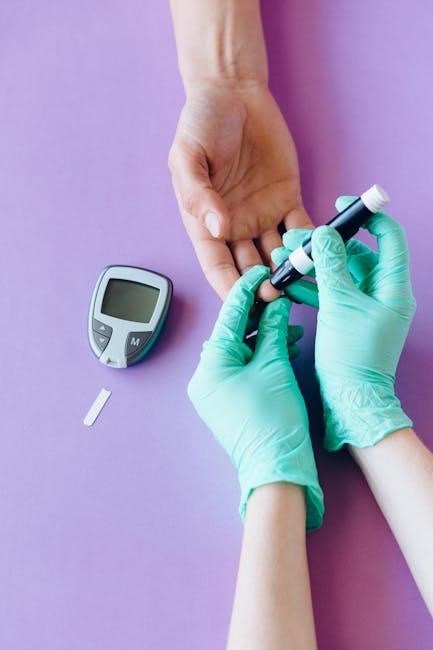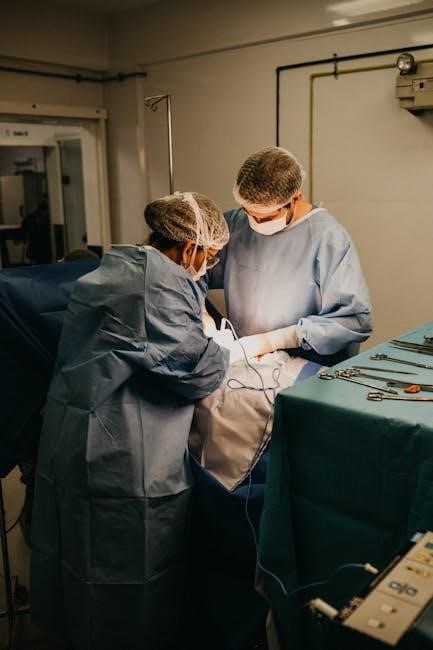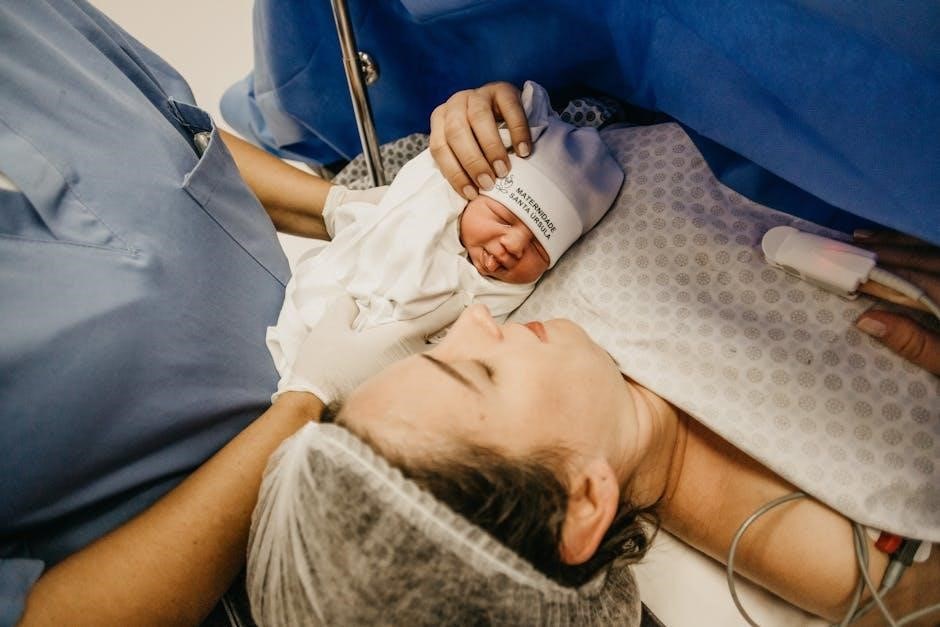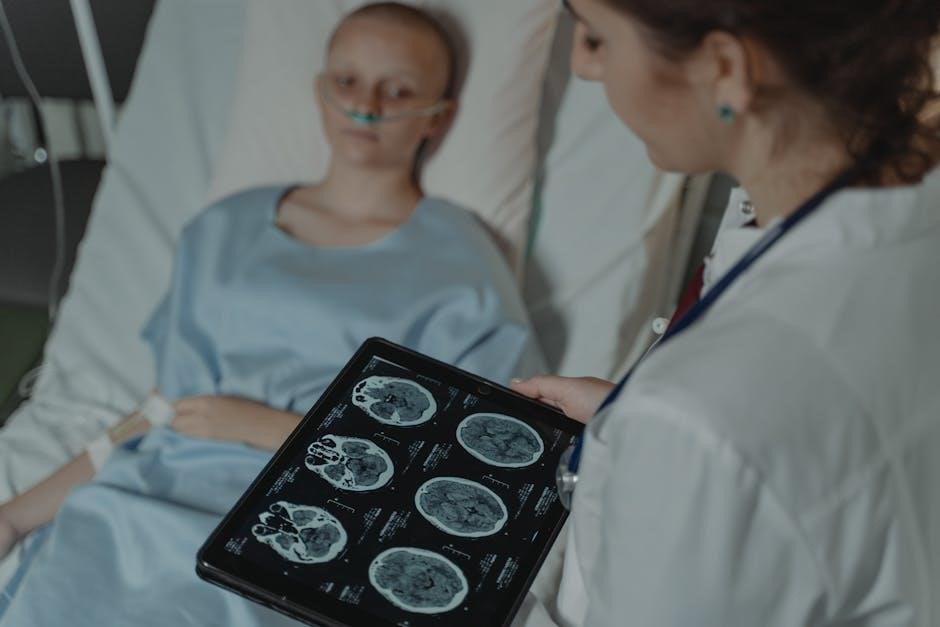hospital patient menu pdf

hospital patient menu pdf
Hospital patient menus are structured meal plans designed to meet patients’ nutritional needs, aid recovery, and accommodate special dietary requirements. They are carefully planned by healthcare professionals, ensuring meals are nutritious, balanced, and tailored to individual health conditions. These menus often include therapeutic options, cultural preferences, and clear guidelines to promote patient satisfaction and overall well-being during their stay.
Overview of Hospital Patient Menu PDF
A hospital patient menu PDF is a detailed document outlining meal options for inpatients, ensuring nutritional needs are met during their stay. It typically includes daily meal plans, therapeutic diets, and special dietary accommodations. The PDF often features clear categories for breakfast, lunch, dinner, and snacks, with descriptions of each dish. It may also highlight nutritional information, food safety protocols, and allergen alerts. Designed for easy readability, these menus are shared with patients to promote transparency and satisfaction. They are regularly updated to reflect seasonal ingredients and patient preferences, serving as a crucial tool for healthcare providers to support recovery and well-being.
Importance of Nutrition in Hospital Care
Nutrition plays a vital role in hospital care, directly impacting patient recovery, health outcomes, and overall well-being. A well-balanced diet helps patients regain strength, supports immune function, and aids in healing. Proper nutrition is especially critical for patients with chronic conditions, those undergoing surgery, or recovering from illnesses; It also helps prevent complications, such as malnutrition or infections, and supports mental health. Tailored meal plans ensure patients receive the necessary calories, vitamins, and minerals to meet their specific needs. By prioritizing nutrition, hospitals can enhance patient satisfaction, reduce hospital stays, and improve long-term health outcomes, making it a cornerstone of effective care.

Design and Planning of Hospital Menus
Hospital menus are meticulously planned by healthcare professionals to ensure they meet patient nutritional needs, accommodate dietary restrictions, and adhere to health standards.
Key Considerations for Menu Development
Hospital menus must be tailored to meet diverse patient needs, ensuring nutritional balance and adherence to dietary restrictions. Patient-specific requirements, such as allergies or cultural preferences, are prioritized. Menus are designed to promote recovery, with meals that are easy to consume and digest. Seasonal ingredients and locally sourced foods are often incorporated to enhance flavor and sustainability. Additionally, menu planning considers food safety protocols and waste reduction strategies. Patient feedback is also integral to refining offerings and ensuring satisfaction. These considerations ensure menus are both therapeutic and appealing, supporting overall patient well-being.
Role of Dietitians in Menu Creation
Dietitians play a crucial role in hospital menu creation by assessing patient nutritional needs and developing meal plans that support recovery. They collaborate with healthcare teams to ensure menus align with medical requirements and dietary restrictions. Dietitians also implement evidence-based guidelines, ensuring meals are balanced and meet therapeutic goals. Their expertise helps customize menus for diverse patient populations, addressing cultural, religious, and personal preferences. Additionally, dietitians educate patients and staff about the importance of nutrition in healing, making them essential contributors to patient care and satisfaction.

Therapeutic Diets and Special Requirements
Hospital menus often include therapeutic diets tailored to specific medical conditions, such as liquid or low-sodium diets, ensuring meals meet patients’ health needs and aid recovery effectively.
Types of Therapeutic Diets
Therapeutic diets are specialized meal plans designed to manage specific medical conditions or dietary needs. Common types include clear liquid diets for digestion issues, full liquid diets for patients with chewing difficulties, and soft mechanical diets for those with dental problems. Pureed diets are often used for patients with swallowing disorders, while low-sodium or low-fat diets help manage heart conditions. Diabetic diets control blood sugar levels, and gluten-free diets cater to patients with celiac disease. These diets are tailored to promote recovery, maintain nutrition, and ensure patients receive meals that align with their health requirements.
Accommodating Cultural and Religious Preferences
Hospital patient menus often include options to accommodate cultural and religious dietary preferences, ensuring inclusivity and respect for diverse patient needs. Common accommodations include halal, kosher, vegetarian, and vegan meals, as well as traditional dishes from various cuisines. This approach fosters patient satisfaction and ensures meals align with personal beliefs and practices. Additionally, hospitals may involve cultural advisors to review menu offerings, ensuring they are both authentic and respectful. Providing clear labeling and explanations of menu items helps patients make informed choices, promoting a positive dining experience during their stay.

Nutritional Standards and Guidelines
Hospital patient menus adhere to strict nutritional standards, ensuring meals meet patients’ health needs. Portion sizes are calculated to meet Department of Health guidelines, promoting recovery and well-being.
Calorie and Nutrient Requirements
Hospital patient menus are designed to meet specific calorie and nutrient requirements, ensuring meals support recovery and overall health. Each meal plan is tailored to individual dietary needs, considering factors like age, weight, and medical conditions. Nutritional standards are based on guidelines from health departments, emphasizing balanced intake of proteins, carbohydrates, and fats. Portion sizes are carefully calculated to provide adequate energy while managing conditions like diabetes or heart disease. These standards ensure patients receive optimal nutrition, aiding recovery and maintaining bodily functions effectively during their hospital stay.
Food Safety and Hygiene Practices
Hospital patient menus prioritize food safety and hygiene to prevent infections and ensure patient well-being. Meals are prepared in controlled environments, adhering to strict food handling and storage guidelines. Food is served in disposable, food-grade containers to minimize contamination risks. Staff undergo rigorous training to maintain high hygiene standards, from preparation to delivery. Regular audits and quality checks are conducted to ensure compliance with food safety regulations. These practices are critical in hospitals, where patients may have compromised immune systems, making safe and hygienic food preparation essential for their recovery and overall health.

Patient Involvement and Feedback
Patient feedback is crucial for improving hospital menus, ensuring they meet preferences and dietary needs. Hospitals often conduct surveys, focus groups, and menu sampling events to gather insights, fostering patient satisfaction and enhancing meal quality. This collaborative approach helps tailor offerings to better serve patients’ tastes and nutritional requirements, ultimately improving their overall care experience.
Importance of Patient Satisfaction
Patient satisfaction plays a vital role in hospital care, as it directly impacts recovery, morale, and overall experience. Satisfied patients are more likely to adhere to dietary recommendations, fostering better health outcomes. Positive feedback enhances hospital reputation and encourages continuous improvement in menu offerings. Ensuring meals meet patient preferences and needs is essential for maintaining high satisfaction levels, which can significantly influence a patient’s perception of care quality and their willingness to follow medical advice. Addressing patient preferences and dietary needs is crucial for creating a positive hospital experience.
Methods for Collecting Patient Feedback
Hospitals use various methods to collect patient feedback on menus, ensuring continuous improvement. Surveys, both digital and paper-based, are commonly distributed during or after a patient’s stay. Some hospitals implement feedback cards placed in patient rooms or include evaluation forms with meal deliveries. In-person interviews or focus groups with patients and families provide deeper insights. Additionally, hospitals may use digital platforms or mobile apps to gather real-time feedback. These methods help identify patient preferences, satisfaction levels, and areas for improvement, ensuring menus align with patient needs and expectations.

Technology in Hospital Menu Systems
Digital menu systems enhance patient dining experiences by offering real-time meal customization, nutritional information, and preferences tracking. Mobile apps and online platforms streamline ordering and satisfaction feedback.
Digital Menu Systems
Digital menu systems are revolutionizing hospital dining by providing patients with interactive, customizable meal options; These systems allow patients to view menus online, select meals tailored to their dietary needs, and access nutritional information. Real-time updates ensure patients know what’s available daily. Digital menus enhance patient satisfaction by offering transparency and flexibility. They also streamline communication between patients, dietitians, and food service teams. Many systems integrate with electronic health records, ensuring personalized care. This technology fosters a more engaging and patient-centered approach to hospital dining, improving overall experience and adherence to dietary plans.
Room Service Models
Room service models in hospitals offer patients the convenience of ordering meals directly to their rooms. This approach mirrors hotel-style dining, allowing patients to choose from a flexible menu at their preferred time. Meals are prepared in central kitchens and delivered promptly, ensuring freshness and quality. Room service models enhance patient satisfaction by providing greater autonomy and accommodating individual preferences. They also reduce food waste and streamline food service operations. This personalized dining experience is particularly beneficial for patients with specific dietary needs or those recovering post-surgery, promoting comfort and recovery in a more tailored manner.
Sustainability in Hospital Food Service
Sustainability in hospital food service focuses on eco-friendly practices, reducing waste, and using locally sourced ingredients to minimize environmental impact while maintaining nutritional standards for patient meals.
Reducing Food Waste
Hospitals are increasingly adopting strategies to minimize food waste, aligning with sustainability goals. Food recovery programs and redistribution of surplus meals to those in need are common practices. Standardized menus and portion control help reduce excess food preparation. Digital menu systems allow for precise ordering, further minimizing waste. Staff training emphasizes waste reduction techniques, ensuring food is prepared and served efficiently. These practices not only reduce environmental impact but also lower operational costs, contributing to a more sustainable healthcare food service system.
Use of Locally Sourced Ingredients
Hospitals are increasingly incorporating locally sourced ingredients into patient menus to promote sustainability and support local economies. Sourcing ingredients from nearby farms reduces carbon footprints associated with transportation. Fresh, seasonal produce ensures higher nutritional quality and better taste, enhancing patient satisfaction. Locally sourced food also aligns with environmental initiatives, as hospitals aim to reduce their ecological impact. This practice fosters transparency in food origins and supports community well-being, making it a key component of modern hospital food service strategies.

Monitoring and Evaluation
Hospital patient menus undergo periodic reviews to assess effectiveness, ensuring meals meet nutritional standards and patient satisfaction. Data from feedback and outcomes guide continuous improvements.
Assessing Menu Effectiveness
Evaluating hospital menu effectiveness involves analyzing patient satisfaction, nutritional adequacy, and recovery outcomes. Surveys, feedback forms, and clinical data are used to measure success;Menus are assessed for adherence to dietary guidelines, portion control, and variety. Patient recovery rates and reduced complications indicate positive outcomes. Feedback highlights preferences, identifying popular dishes and areas for improvement. Regular audits ensure compliance with health standards, while benchmarking against best practices fosters continuous enhancement. This comprehensive approach ensures menus remain aligned with patient needs, promoting better health and satisfaction during hospital stays.
Continuous Improvement Strategies
Hospital menus undergo regular refinement to enhance quality, patient satisfaction, and nutritional value. Feedback from patients, staff, and dietitians is analyzed to identify areas for improvement. Seasonal menu updates incorporate fresh, locally sourced ingredients, reducing costs and environmental impact. Training sessions for culinary staff ensure dishes are prepared to meet health standards. Digital tools track patient preferences and dietary needs, enabling personalized meal plans. Collaborations with nutrition experts and chefs help innovate offerings while maintaining therapeutic goals. These strategies ensure menus evolve to meet patient needs, fostering better health outcomes and satisfaction during hospital stays.